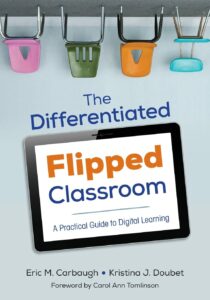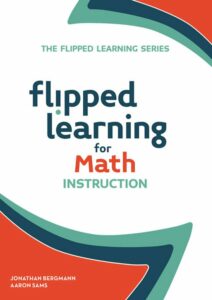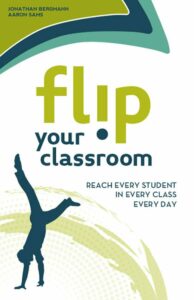Flipping a classroom is much like flipping a pancake: It’s all about technique, timing, and the right ingredients. Okay, maybe the analogy is a stretch, but stay with me. The concept of a flipped classroom has been revolutionizing education, offering a counter-narrative to traditional classroom dynamics that prioritize lectures.
Instead of the ‘sage on the stage,’ we get to be the ‘guide on the side,’ encouraging more interaction, engagement, and hands-on learning during class time. So, in this blog post, I am sharing with you this carefully curated collection of resources on flipped learning. This collection includes expert opinions, case studies, and innovative strategies to effectively implement this teaching model in various educational settings.
Whether you’re new to the flipped classroom concept or looking for ways to up your game, this post aims to provide a comprehensive look at resources that can guide your journey. So, flip a chair and settle in; we’re about to turn some educational paradigms upside-down.
Books on Flipped Learning
Here are some key flipped classroom books to consider reading:
1. The Differentiated Flipped Classroom: A Practical Guide to Digital Learning, by Eric Carbaugh and Kristina Doubet
This book is an excellent resource for educators who want to marry the concept of differentiation with flipped learning. Carbaugh and Doubet offer a cocktail of standards-aligned strategies aimed at making at-home and in-school learning experiences both rich and individualized.
They pull heavily from research-based best practices to guide you in designing flipped classroom experiences that meet the unique needs of each student. This is your go-to if you’re keen on making your flipped classroom not just tech-savvy but also tailored to individual learning styles and paces.
2. Flipped Learning for Elementary Instruction, by Jonathan Bergmann and Aaron Sams
Bergmann and Sams, already renowned for their seminal work on flipped education, have crafted a how-to guide specifically for elementary teachers. This is no ordinary instructional manual; it comes with concrete strategies on lesson planning, in-class activities, and the integration of project-based learning.
It acts as a GPS for elementary teachers new to the flipped classroom model, helping them navigate the digital age of teaching. The book serves the K-5 audience, making it a must-read for any elementary teacher contemplating or already engaged in flipping their classroom.
3. Flipped Learning: Gateway to Student Engagement, by Jonathan Bergmann and Aaron Sams
If you’re already on board with flipping your classroom and are looking for what comes next, this book is your next read. Bergmann and Sams delve into the transformative power of flipped learning combined with project-based pedagogy.
This book dives deep into how you can let your students’ curiosity lead and build strong student-teacher relationships. It includes various case studies from teachers across grade levels and subjects, making it a rich compendium for K-12 educators looking to go beyond the basics and truly engage students at a deeper level.
Having implemented some of these strategies in my own teaching past, I can vouch for the transformative potential of the flipped classroom when done right. It’s not just about technology; it’s about reshaping the classroom environment to make learning more student-centered and dynamic.
4. Flipped Learning for Math Instruction, by Jonathan Bergmann and Aaron Sams
Mathematics is a subject that can intimidate many students, but flipping the classroom can make it far more engaging and effective. Bergmann and Sams are back at it again, this time with a focus on math instruction. The book serves as a practical guide for math teachers, offering actionable advice on lesson planning, in-class activities, and integrating inquiry-based learning within a flipped framework.
Designed to help teachers navigate the challenges of modern teaching, it’s a go-to for anyone in the math department contemplating a flip. I’ve found in my own teaching that subjects like math can really benefit from this approach, giving students the chance to wrestle with problems collaboratively in class, while ingesting lectures at their own pace at home.
5. Blended Learning & Flipped Classrooms, by Patricia Adams and Happy Gingras
If you’re an educator who wishes students were more engaged, proactive, and accountable, this book might just have the answers. Adams and Gingras present a compelling case for blended learning and flipped classrooms as methods to achieve just that.
They argue that combining traditional instruction with digital tools can lead to a higher level of student engagement, and provide a treasure trove of strategies to make this happen. This book not only discusses what blended learning and flipped classrooms can achieve but also how to make it a reality. It’s a practical blueprint for any teacher eager to innovate.
6. Flip Your Classroom: Reaching Every Student in Every Class Every Day, by Jonathan Bergmann and Aaron Sams
This is the book that started it all; it’s essentially the flipped classroom manifesto by Bergmann and Sams. Their idea is both simple and transformative: Move lectures online to give teachers more time to interact with students during class. This approach turned out to foster deeper understanding and more individualized learning.
The book goes beyond the ‘what’ and ‘why,’ diving into the ‘how’ with the flipped mastery model, enabling students to learn at their own pace. It’s an incredibly empowering method and the book is full of tools to help you make the shift. For me, this flipped model aligns well with the ideals of fostering self-directed learning, which I find vital in education.
7. The Flipped Classroom: Practice and Practices in Higher Education, by Carl Reidsema, Lydia Kavanagh, Roger Hadgraft, Neville Smith (Editor)
Taking a bit of a different tack, this book zeros in on higher education, looking at how the flipped classroom model can be adapted and implemented at this level. It’s not just a single voice; instead, the book gathers perspectives from a variety of higher ed institutions and disciplines, providing a nuanced look at the challenges and opportunities of flipping the college classroom.
If you’re in higher education, this book is an invaluable resource, offering both theoretical background and practical tools. I find that flipping a classroom can be even more impactful at the college level, where students are gearing up for professional life and can benefit immensely from self-directed learning and deep subject matter exploration.
Concluding thoughts
Wrapping this all up, the flipped classroom is a fundamental rethinking of how we can facilitate meaningful learning experiences for our students. From my own stints in the classroom and current work in educational research, I can attest that flipping your classroom does more than just change where lectures are viewed and homework is done; it transforms the very fabric of teaching and learning.
Each book discussed here offers a distinct angle, be it subject-specific strategies, differentiation, or the logistics of turning theory into practice. As we navigate an educational landscape that’s becoming increasingly digital and interconnected, these resources serve as invaluable compasses. It’s a shift that takes some getting used to, for sure, but it’s one that can profoundly benefit both teachers and students.













